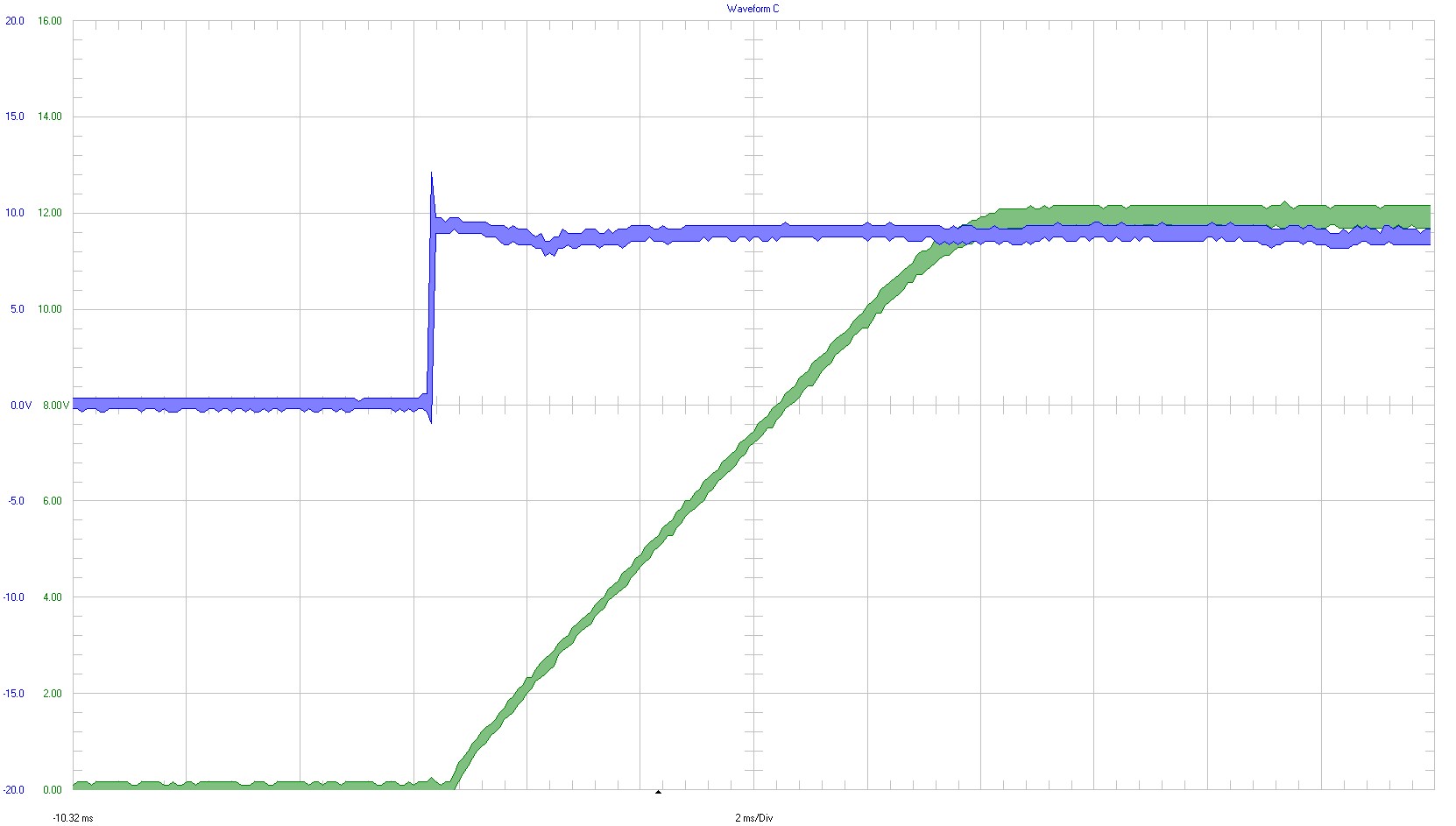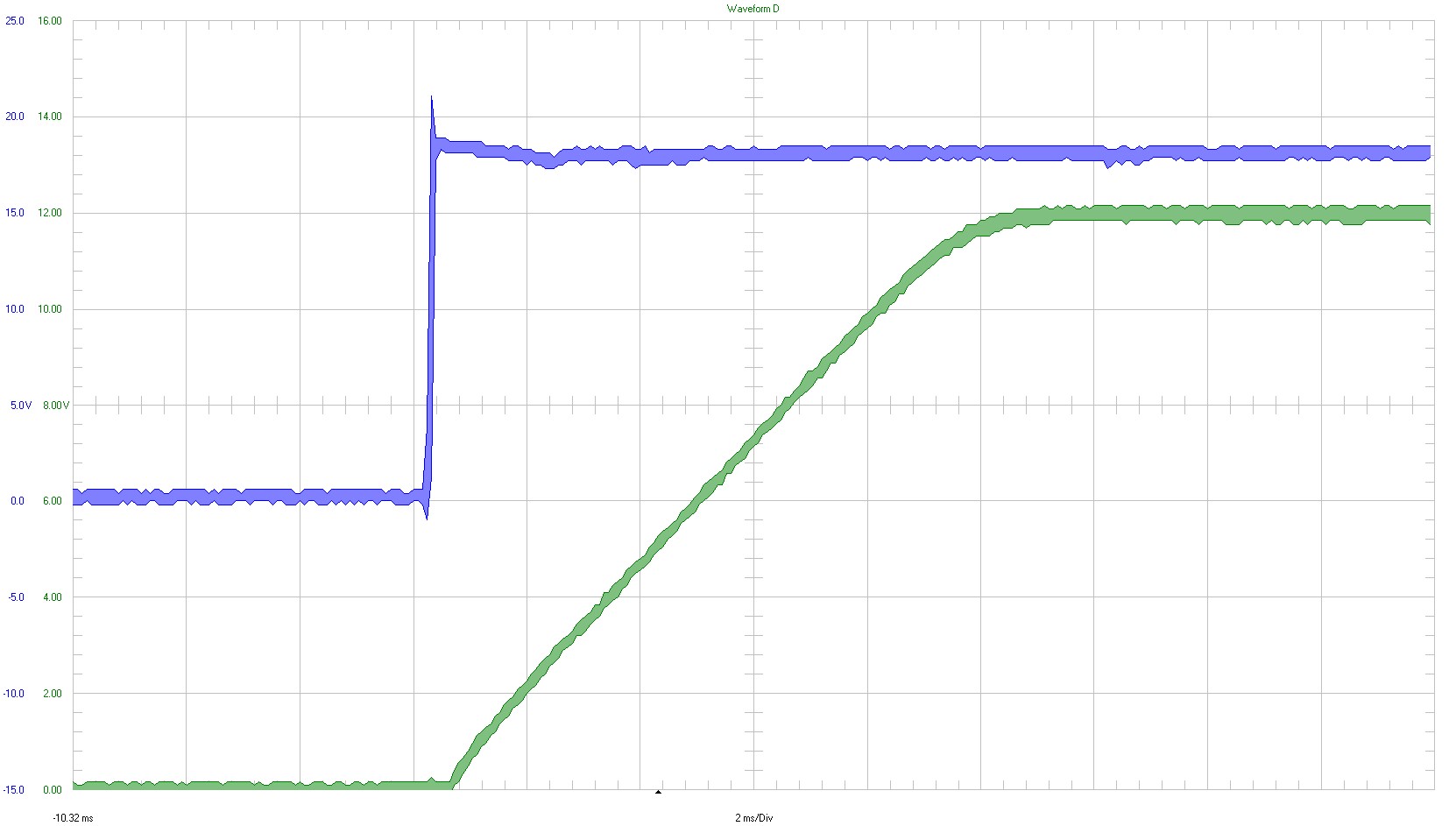TIDT260 March 2022
3.5 Start-Up Sequence
Start-up behavior is shown in the following figures.
 Figure 3-11 9-V Input Voltage (UVLO set to 9.0 V ON and
7.3 V OFF)
Figure 3-11 9-V Input Voltage (UVLO set to 9.0 V ON and
7.3 V OFF)VIN (blue curve)
- 5-V / div
- 20-MHz bandwidth
VOUT
- 2 V / div
- 20-MHz bandwidth
2 ms / div
 Figure 3-12 Start-up at
18-V Input Voltage
Figure 3-12 Start-up at
18-V Input VoltageVIN (blue curve)
- 5-V / div
- 20-MHz bandwidth
VOUT
- 2 V / div
- 20-MHz bandwidth
2 ms / div